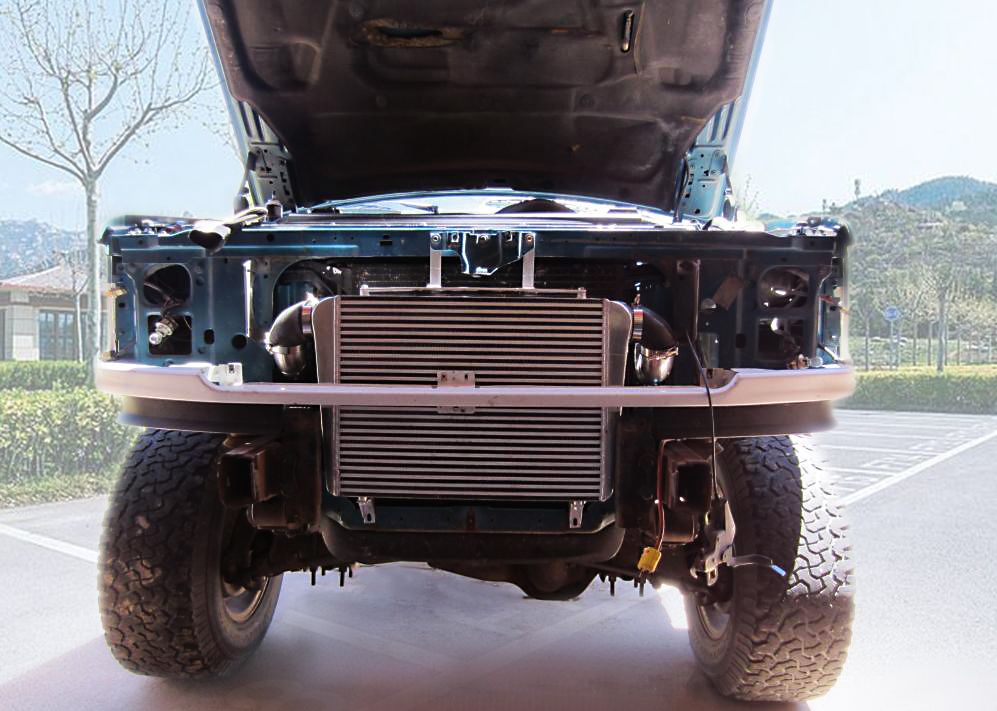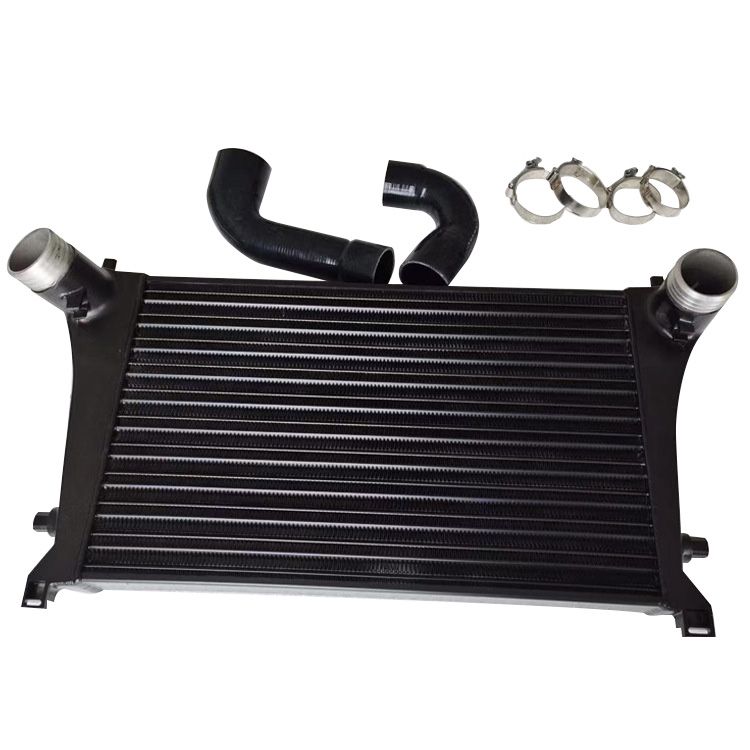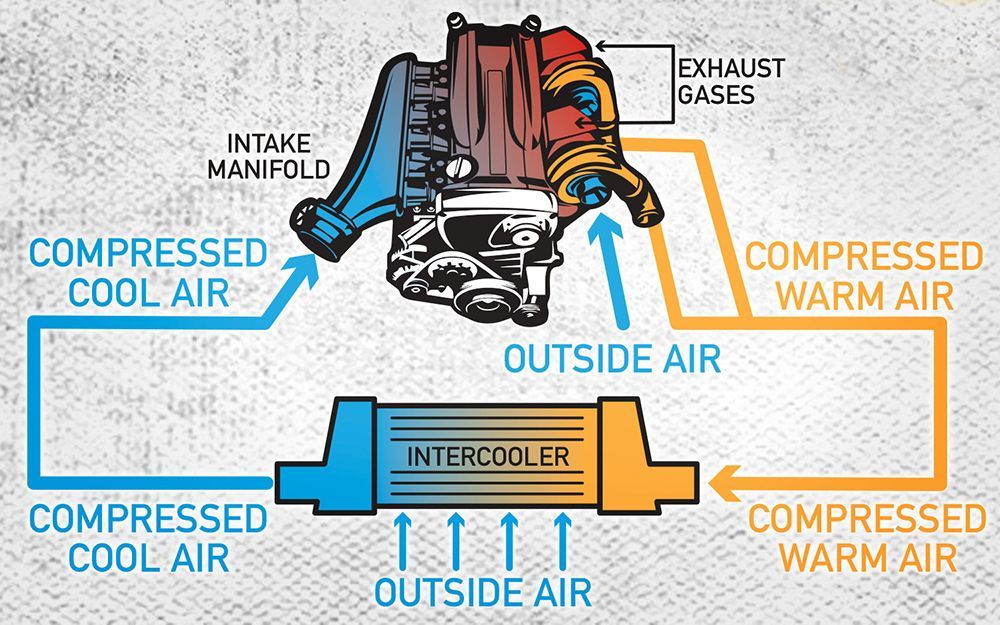What is An Intercooler?
An intercooler is a device that helps to cool air as it passes through the engine of a car or truck. By cooling the air, the intercooler helps improve the engine’s performance and prevent overheating. There are two main types of intercoolers: air-to-air and air-to-water. Air-to-air intercoolers use air to cool the air passing through the engine, while air-to-water intercoolers use water to cool the air.
Intercoolers are often used in high-performance cars and trucks with turbocharged or supercharged engines. By cooling the air before it enters the engine, the intercooler helps to increase the amount of air the engine can take in. This, in turn, helps improve the engine’s power and performance. Intercoolers are also sometimes used in diesel engines.
What is the Purpose of An Intercooler?
The primary purpose of an intercooler is to cool the air that the turbocharger or supercharger has compressed before it enters the engine. By cooling the air, the intercooler reduces the chances of knocking and allows for more air to be forced into the engine, which can increase power output. Additionally, cooling the air can also help reduce emissions.
An intercooler can be used on both turbocharged and supercharged engines. When used on a turbocharged engine, the intercooler is located between the turbocharger and the engine. On a supercharged engine, the intercooler is typically located between the supercharger and the engine. Intercoolers can be air-to-air or air-to-liquid. Air-to-air intercoolers use ambient air to cool the compressed air from the turbocharger or supercharger. Air-to-liquid intercoolers use a liquid coolant to cool the compressed air from the turbocharger or supercharger.
How Does An Intercooler Work?
An intercooler uses a series of fins and plates to dissipate heat. The air or fluid is forced through the intercooler, and the fins help to transfer the heat from the air or fluid to the surrounding atmosphere. This process helps to keep the air or fluid cool, so the engine or system can run more efficiently. Additionally, an intercooler can prolong the life of an engine or system by preventing overheating.
When the air is compressed by a turbo/supercharger, it gets hot very quickly. Therefore, its temperature climbs and its oxygen content (density) drops. When the air is cool, an intercooler provides a denser, more oxygen-rich air to the engine. Therefore, improving the combustion by allowing more fuel to be burned.
It also increases reliability as it provides a more consistent temperature of air intake to the engine. This allows the air-fuel ratio of the engine to remain at a safe level.
The Two Type of Intercoolers
1. Air-to-Air Intercooler
An air-to-air intercooler is a device used to cool the air compressed by a turbocharger or supercharger. Intercoolers are a vital part of forced induction systems, as they help reduce the engine’s intake temperatures, which in turn helps to increase power and efficiency. There are two main types of air-to-air intercoolers: front mount and top mount. Front-mount intercoolers are usually more extensive and effective than top-mount intercoolers, but they can be more challenging to install. Top-mount intercoolers are easier to install, but they may not be as effective at cooling the air.
Air-to-air intercoolers work by passing the compressed air from the turbocharger or supercharger through a series of fins or coils. These fins or coils help dissipate the heat from the air, which helps to cool it down. The cooler air then flows into the engine, where it can help to increase power and efficiency. Intercoolers can be made from various materials, but aluminium is often used because it is lightweight and has good thermal conductivity.
If you want to add an air-to-air intercooler to your forced induction system, there are a few things to consider. First, you need to make sure that the intercooler will fit in the space that you have available. Second, you must decide whether you want a front-mount or top-mount intercooler. Finally, you need to choose a material that will be durable and effective at cooling the air.
Advantages:
- Simplicity
- Lower cost
- Less weight
This also makes it by far the most common form of intercooling.
Disadvantages:
- Longer intake length due to having to get the intercooler to the front of the car.
- More variation in temperature than air to water.
Placement
The best placement for an air-to-air intercooler is at the front of the vehicle. The “front-mount” is considered to be the most effective placement.
When the engine layout or type of the vehicle do not permit the “front-mount” placement, the intercooler can be mounted on top of the engine or even on its side. These placements will often require additional air ducts or scoops to route the air directly into the intercooler. However, these are not considered practical. This is because the airflow is not as effective. Thus, the intercooler can suffer from heat soak from the engine when the external airflow drops.
2. Air-to-Water Intercooler
An air-to-water intercooler is a type of intercooler that uses water to cool the air charge coming from the turbocharger or supercharger.
The main advantage of an air-to-water intercooler over a traditional air-to-air intercooler is that it can provide a much denser charge of air to the engine. This results in more power being produced by the engine, as well as increased fuel efficiency.
There are several disadvantages to using an air-to-water intercooler, however. One is that they are generally more expensive than traditional air-to-air intercoolers. Another disadvantage is that they require a constant supply of water, which can be difficult to maintain in some climates. Finally, air-to-water intercoolers can be more difficult to install than traditional air-to-air intercoolers.
Advantages:
- This makes them well suited to complex installations where space, airflow and intake length are an issue. Water is more efficient at heat transfer than air. Thus, it has more stability to be able to handle a broader range of temps.
Disadvantages:
- However, this system requires the added complexity, weight and cost of a radiator, a pump, water, and transfer lines. Typical applications for these are industrial machinery, marine and custom installs that don’t allow the easy fitment of an air to air, such as a rear-engined vehicle.
Placement
The air to water can be mounted anywhere in the engine bay as long as the radiator is mounted in a position with good airflow or a thermo fan attached to it.
Post time: Jun-21-2023


